Multiple Shoots Propagation with Bioreactor Culture of Labisia pumila (Bl.) F. Vill.
QI Wen-wen, JIANG Yin-ji, LI Yong-yi, MURTHY Hosakatte-niranjana, CUI Xi-hua,ZHANG Ji-de*
1. Department of Agronomy, Yanbian University, Yanji 133001, PRC;
2. Yanbian Academy of Agricultural Sciences, Yanji 133001, PRC;
3. Department of Botany, Karnatak University, Dharwad 580003, India
Abstract This study was to establish the micropropagation system of Labisia pumila (Bl.) F. Vill. and explore the feasibility of mass production of its multiple shoots by bioreactor culture. [Method] The effects of cytokinin or cytokinin/auxin mixture solution at different concentrations on its shoot growth and propagation by nodal segment culture were tested. In order to mass-proliferate its shoots, multiple shoots were suspension-cultured on Murashige and Skoog (MS) liquid medium in the bioreactor. [Results] Thidiazuron (TDZ) showed the highest cytokinin-like activity and the number of its shoots at the TDZ concentration of 0.1 mg/L was the maximum up to 21.5 shoots per explant, without the TDZ effect on shoot elongation, but zeatin significantly promoted the shoot elongation and each explant grew 6.8 relatively long shoots at 5.0 mg/L of zeatin. There was no significant effect on shoot propagation on induction medium supplemented with auxin. By inoculating 10 g/L (260 shoots)of multiple shoots into 3 L airlift bioreactor containing 2 L MS liquid medium supplemented with 0.1 mg/L TDZ for solution culture, 6 100 multiple shoots with a fresh weight of 183.13 g were harvested. After explant regeneration was conducted in MS solid medium, the regenerated plants were transplanted into flowerpot and the morphologically normal and healthy plants were obtained. [Conclusion]The development of bioreactor technology was conducive to the high efficiency propagation of L. pumila shoot.
Key words Labisia pumila; Multiple shoot; Auxin; Bioreactor; Cytokinin;Propagation
1. Introduction
Labisia pumila(Bl.) F. Vill. (Myrsinaceae), a popular herb among the womanfolk in Malaysia, is known locally as “Kacip Fatimah” and grown extensively in the shady floors of the Malaysian and Indonesian forests[1-2].L.pumilais commonly propagated by seeds and stem cuttings.However, the growth rate ofL.pumilain the natural habit is very slow and seeds are difficult to obtain because of frequent depletion of mother plants[3]. Traditionally, leaves and roots ofL.pumilahave been used to induce and facilitate childbirth as well as in postpartum treatments since the ancient times[4-5]. For its estrogenic properties,L.pumilahas been extensively used in preparation of herbal product and highly demanded for the manufacturing of commercial product[3,6].
Tissue culture is an effective system for mass production of plant raw material with uniform quality through the year. To establish micropropagation system, it is essential to optimize chemical and physical environments for each plant species. Plant growth regulators are the essential part forin vitroregeneration. They regulate the speed of growth of the individual parts and integrate these parts to produce the plants. Both auxins and cytokinins are synergistically required to induce cell division and growth in plant tissue cultures[7]. Cytokinins are plant hormones that can regulate numerous growth and developmental processes[8]. There have been reports of the promoting effects of cytokinin or cytokinin/auxin combination on micropropagation in the cultures ofLiriope platyphylla[9], pomegranate[10]and fourCapsicumspecies[11]. However, the requirement for cytokinin and auxin depends on plant variety and culture conditions.
The application of bioreactor culture techniques for plant micropropagation is regarded as one of the ways to reduce production cost by scaling-up and automation[12]. There have been successful reports on the shoot production in bioreactor cultures of chrysanthemum, sweetpotato, Chinese foxglove[12]and strawberry[13]. Recent these researches are restricted to a small number of species, but they can demonstrate the feasibility of this technology.
Recently,in vitroseed germination and plantlet establishment from epicotyls ofL.pumilahave been reported[3]. However, an efficient micropropagation for high-frequency multiple shoot propagation ofL.pumilaby using a wide range of plant hormones and large-scale multiple shoot multiplication has not been reported. Therefore, in order to produce more multiple shoots ofL.pumila, the effect of cytokinins or the combination of cytokinins and auxins on its shoot growth and propagation by nodal segment culture and bioreactor culture were determined in this study.
2. Materials and Methods
2.1. Effect of cytokinins on multiple shoot propagation and growth
Axillary shoot proliferation was induced from the nodal explants of 2 month-oldin vitroplants on Murashige and Skoog (MS) solid medium supplemented with sucrose at 30 g/L and four cytokinins at different concentrations: zeatin, N6-benzylaminopurine (BA) and kinetin each at the concentration of 0.5, 1.0, 3.0, 5.0 and 7.0 mg/L, and thidiazuron (TDZ) at the concentration of 0.1, 0.3, 0.5,1.0 and 2.0 mg/L. Cultures were maintained for 12 weeks at 25±2 ℃ with a PPF of 30 μmol/m2s. After 12 weeks of culture, the growth of multiple shoots was assessed in terms of fresh weight (Fresh wt.) and dry weight (Dry wt.), numbers of shoots (No. shoots),length of shoots, numbers of leaves (No. leaves) and leaf area. And the development of multiple shoots on MS medium supplemented with 0.1 mg/L TDZ and 5.0 mg/L zeatin, kinetin and BA was observed after 0, 10,30, 60 and 90 d of cultures.
2.2. Effect of cytokinin/auxin mixture on shoot propagation and growth
Axillary shoot proliferation was induced from the nodal explants of 2 month-oldin vitroplants on MS solid medium supplemented with 30 g/L sucrose,5.0 mg/L zeatin or 0.1 mg/L TDZ, and three differentconcentration auxins: indolebutyric acid (IBA),Indole-3-acetic acid (IAA) and α-Naphthalene acetic acid (NAA) each at the concentration of 0.1, 0.5 and 1.0 mg/L. After 12 weeks of cultures, other culture conditions and investigations were the same as the first experiment.
2.3. Multiple shoots production in flasks and bioreactors
For large-scale shoot multiplication, multiple shoots were subcultured in 250 mL flasks containing 100 mL of MS liquid medium with 0.1 mg/L TDZ and in 3 L airlift bioreactors containing 2 L of MS liquid medium with 0.1 mg/L TDZ. The cultures were started by the inoculation with multiple shoots at a density of 10 g/L, and the medium was aerated at 0.1 vvm(air volume/culture volume per min) in the bioreactor cultures. After 12 weeks of cultures, the Fresh wt.,Dry wt. and No. shoots were determined.
2.4. Shoot elongation and acclimatization
Multiple shoots obtained from the media with the TDZ in the bioreactors were transplanted to MS solid medium. After 6 weeks of culture, regenerated plantlets were washed with running water to remove agar sticking. The bottom of plantlets (a height of 5~10 cm) with fully expanded leaves was dipped in 1 000 ppm IBA and then transplanted into the pots containing perlite, peat moss and soil (1 ∶1∶1, v/v).
2.5. Statistical analysis
The results were the mean values of three independent experiments. One-way analysis of variance (ANOVA) was used to determine whether the groups differed significantly. Statistical assessments of the difference between mean values were then tested by the least significant difference (LSD) test. A probability ofP<0.05 was considered significant and all data were analyzed using the SAS program (SAS Institute, Inc., USA).
3. Results and Discussion
3.1. Effect of zeatin, kinetin, BA and TDZ on shoot propagation and growth of L. pumila
After nodal explants were cultured on the MS medium supplemented with different concentrations of cytokinins for more than 12 weeks, the multiple shoot induction was significantly influenced by the cytokinin type and concentrations (Table 1,Fig. 1). Multiple shoots developed profusely in the medium supplemented with the TDZ and zeatin,whereas just one shoot or two shoots were observed in the cytokinin-free medium (the control) and in the medium supplemented with kinetin and BA.Therefore, the TDZ and zeatin were more effective for shoot propagation. As shown in Table 1, the TDZ showed the highest cytokinin-like activity and provided the maximum number of shoots (21.5 shoots per explant) at the TDZ concentration of 0.1 mg/L.However, the shoot elongation (length of shoots<0.50 cm) and leaf development (No. leaves<3 and Leaf area≤0.3 cm2) were not observed (Table 1, Fig. 1).The inhibition of shoot elongation by the TDZ may be related with its high cytokinin activity, as previously reported[14]. But the zeatin in the medium significantly promoted the shoot elongation (Fig. 1). The medium supplemented with 5.0 mg/L zeatin grew 6.8 relatively long shoots per explant among the zeatin treatments(Table 1). Zeatin was superior compared with the BA and kinetin in terms of shoot proliferation and shoots length. In addition, the zeatin treatment also produced large leaves as compared with other cytokinins (Fig.1, Table 1). These findings were similar to earlier reports regarding the positive effective of zeatin on promoting shoot proliferation and shoot length in the culture ofBixa orellana[15]. HARTINIE M and JUALANG G A[3]reported the substantial role of zeatin (1 μM) on shoot elongation but not on shoot proliferation ofL. pumila. This study also showed that the lower-concentration zeatin (0.5 or 1.0 mg/L)just promoted shoot elongation, while the higherconcentration zeatin (3.0, 5.0, or 7.0 mg/L) led to both shoot proliferation and shoot elongation. Therefore,cytokinins increased to a certain concentration could stimulate shoot multiplication but inhibit its elongation. In general, the BA was more effective than the other cytokinins, which was considerably affected by the plant species and explant types. The variation in the activity of different cytokinins could be explained by their different uptake rate in different genomes reported[16-17], different translocation rates to meristematic regions and different metabolic processes, in which the cytokinin may be degraded or conjugated with sugars or amino acid to form biologically insert compounds as reported by TRAN THANH VAN K and TRINH T H and KAMíNEK M[18-19].
The development of multiple shoot on the MS medium supplemented with 0.1 mg/L TDZ or 5.0 mg/L zeatin, kinetin or BA was shown in Fig. 2.The axillary buds formed after 10 d of the TDZ or zeatin treatment. However, the TDZ showed different patterns of shoot formation compared with the zeatin after 30 d of culture. The zeatin-supplemented media regenerated multiple shoots from the axillary parts.But the shoot started from axillary parts and then occurred from other parts under the TDZ treatment.Therefore, the TDZ is now being widely used for micropropagation of several woody plants because of its tremendous ability to enhance axillary shoot proliferation[14]. KANG H and HALL R B[20]reported that multiple shoots could be formed from several meristematic regions including the bud apexes, the vascular cambium, the phellogen of internode explant and the modified node (node with the axillary bud excised). Therefore, in this study, the high cytokinin activity of TDZ maybe break several meristematic regions and then result in the formation of both axillary and adventitious shoots[14,21].
The high-rate shoot proliferation, often desirable for efficient micropropagation, may include both axillary and adventitious shoots[11]. In this study, the TDZ treatment increased the shoot proliferation and decreased the shoot length, while the zeatin treatment had an influence on the shoot formation and the shoot elongation.
3.2. Effect of the combination of cytokinin and auxin on shoot propagation and growth of L.pumila
To study the synergistic effect of auxins and cytokinins, the node explants were cultured on MS medium fortified with different type of auxins(IBA, IAA and NAA) at the concentrations of 0.1, 0.5 and 1.0 mg/L and supplemented with 0.1 mg/L TDZ or 5.0 mg/L zeatin. When 0.1 mg/L TDZ was combined or mixed with auxins in the medium, the number of shoots increased compared with that of the TDZ treatment, alongside with a slight shoot elongation. The IBA and IAA were more effective for shoot propagation than the NAA(Table 2, Fig. 3). The largest number of shoots(22 shoots per explant) was obtained at 0.1 mg/L TDZ and 0.1 mg/L IBA. The proportion of auxin to cytokinin was a determinant for meristem formation and the hormone balance established by growth regulators determined the type of buds induced[17,22].The inherent endogenous auxin and cytokinin levels must have also played a role in the observed data[23].The TDZ, a derivative of phenylurea with cytokininlike activity, was found to be able to induce the biosynthesis of cytokinin, inhibit the degradation of endogenous auxin and stimulate the de novo synthesis of auxins[23-26]. Therefore, the low-level TDZ combined with the low-level IBA may result in the higher number of shoots in this study.
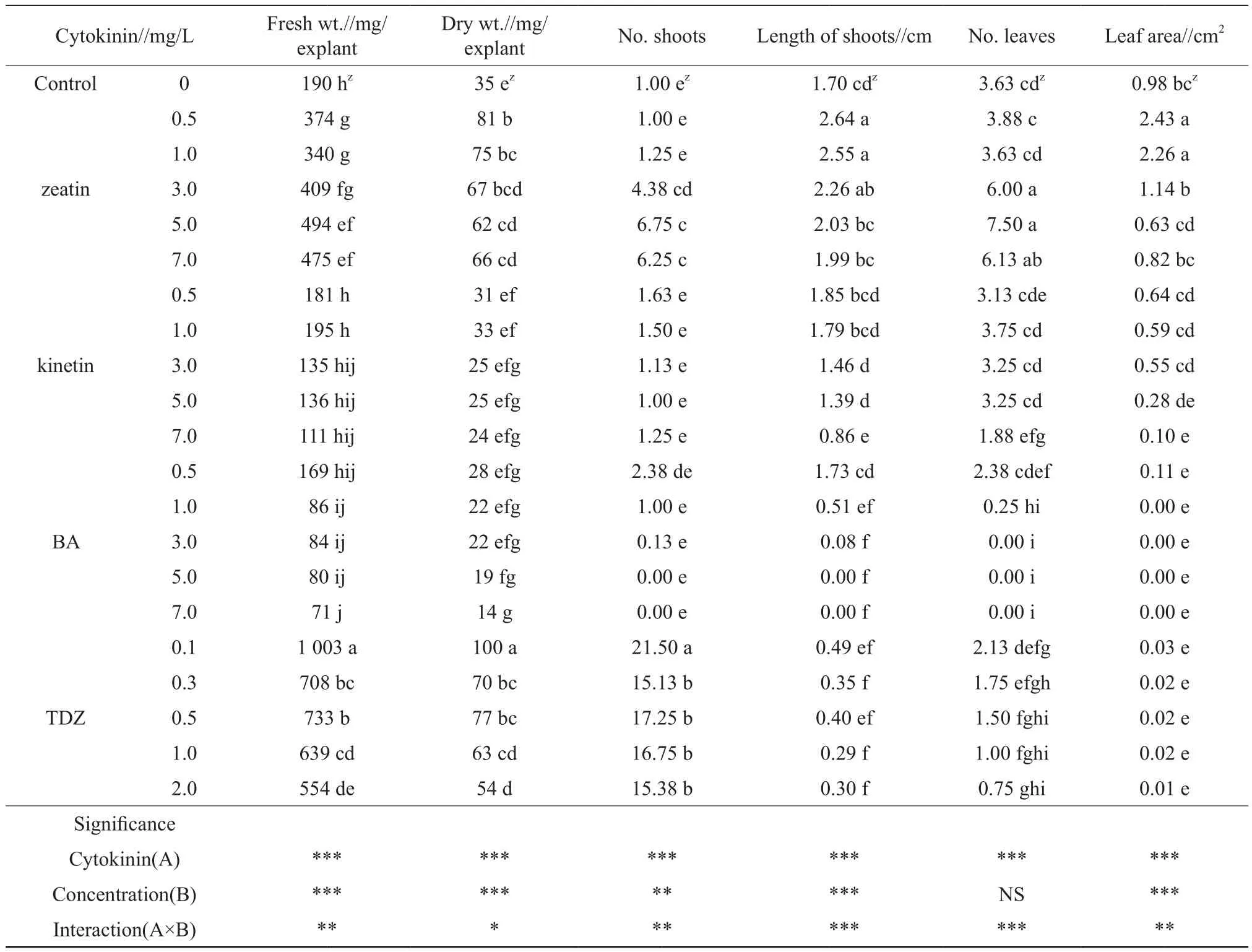
Table 1 Effect of zeatin, kinetin, BA and TDZ on shoot growth of L. pumila
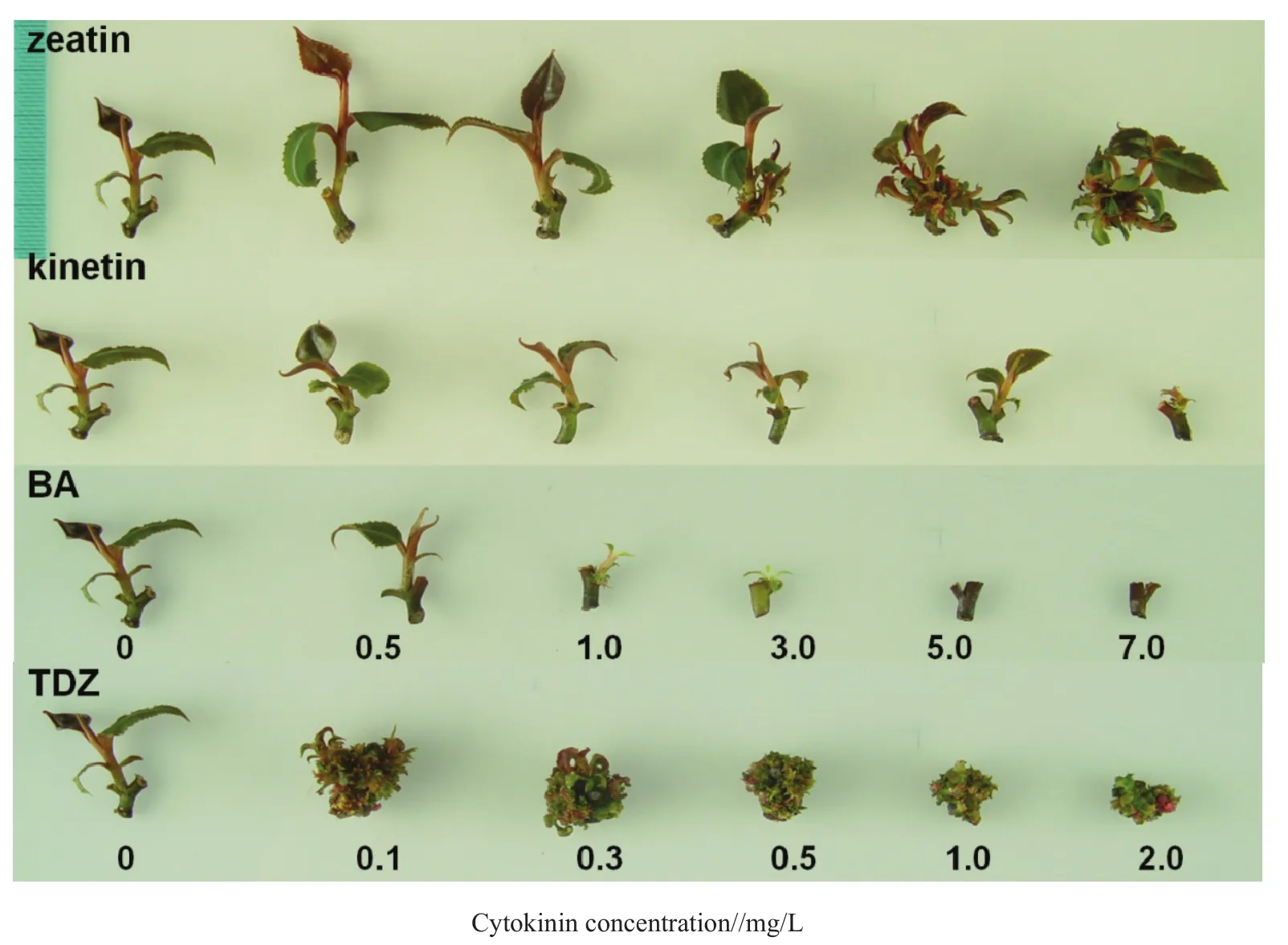
Fig. 1 L. pumila shoot growth on medium with different types and concentrations of cytokinins after 12 weeks of culture
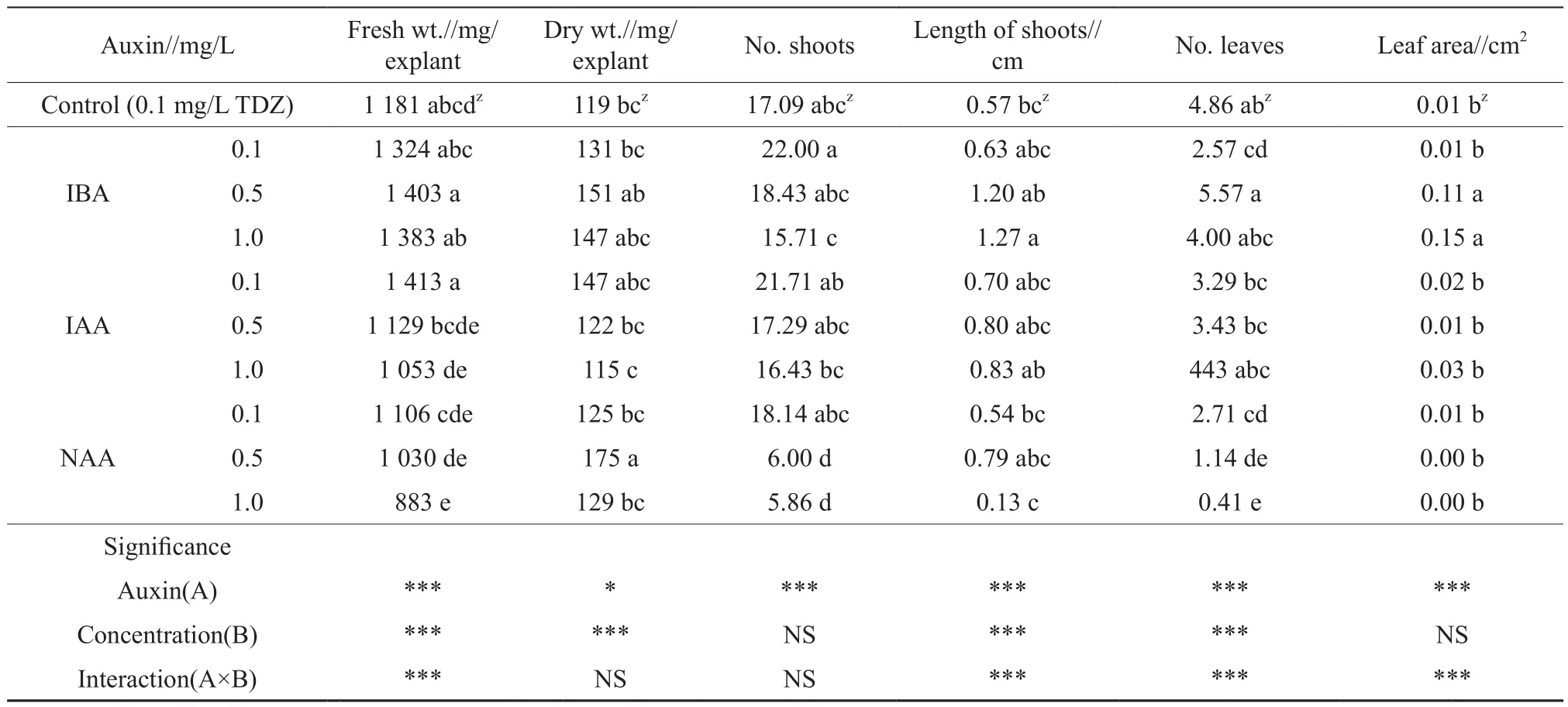
Table 2 Effect of different types and concentrations of auxins combined with 0.1 mg/L TDZ on shoot growth
The combination of 5 mg/L zeatin and auxins didn’t promote the shoot propagation compared with the zeatin alone (Table 3). However, the Fresh and Dry wt. of shoots, the shoot length and the leaf area were significantly increased under the treatments with auxins (Fig. 4). The cytokinin-auxin combination resulted in the improvement of the overall health of shoots inBambusa bambos[27]andDendrocalamus longispathus[28].
3.3. Multiple shoots production in flasks and bioreactors
To develop the efficient micropropagation and achieve the high-frequency shoot multiplication,the flask and bioreactor cultures were conducted using TDZ-supplemented media. Large amounts of multiple shoots were obtained through the flasks and bioreactors culture on MS liquid medium (Fig. 5).When the multiple shoots were subcultured on the MS liquid medium with 0.1 mg/L TDZ in 250-mL flasks and 3-L airlift bioreactors, the number of shoots was 658 and 6 100, respectively (Table 4).
It is well known that liquid medium often results in greater shoot growth and multiplication rates[12,29].On the other hand, the liquid medium also often causes hyperhydricity ofin vitroplantlets[12]. In this study, large amounts of healthy and fresh shoots were got (Fig.5). Therefore, future research would be needed on the effect of different physical and chemical microenvironmental conditions such as high PPFD and CO2enrichment on multiple shoot growth in the bioreactor culture.
3.4. Shoot elongation and acclimatization
In this study, an efficient micropropagation for high-frequency shoot multiplication ofL.pumilausing the TDZ-supplemented media was developed. But the shoot elongation was inhibited by the TDZ for its high cytokinin activity[11,14]. Therefore, the multiple shoots obtained from the TDZ-supplemented media in the bioreactors were transplanted to the MS solid medium for shoot elongation. After 6 weeks of culture, the multiple shoots elongated very well in the MS medium without auxin/cytokinin. Subsequently,in vitrogrown plantlets dipped in 1 000 ppm IBA were acclimated in the soil (perlite∶peat moss∶soil=1∶1∶1, v/v) and developed into morphologically normal and healthy plants (Fig. 6).

Fig. 2 Development of L. pumila multiple shoot on MS medium supplemented with 0.1 mg/L TDZ or 5.0 mg/L zeatin, kinetin or BA
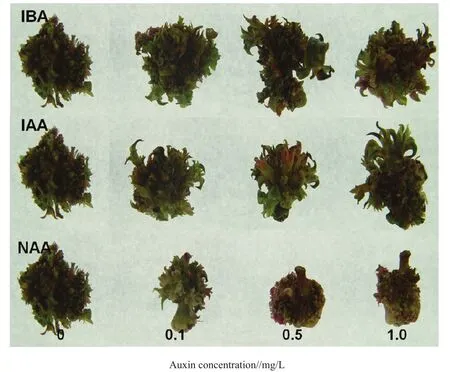
Fig. 3 Effect of different types and concentrations of auxins combined with 0.1 mg/L TDZ on L. pumila shoot growth after 12 weeks of culture
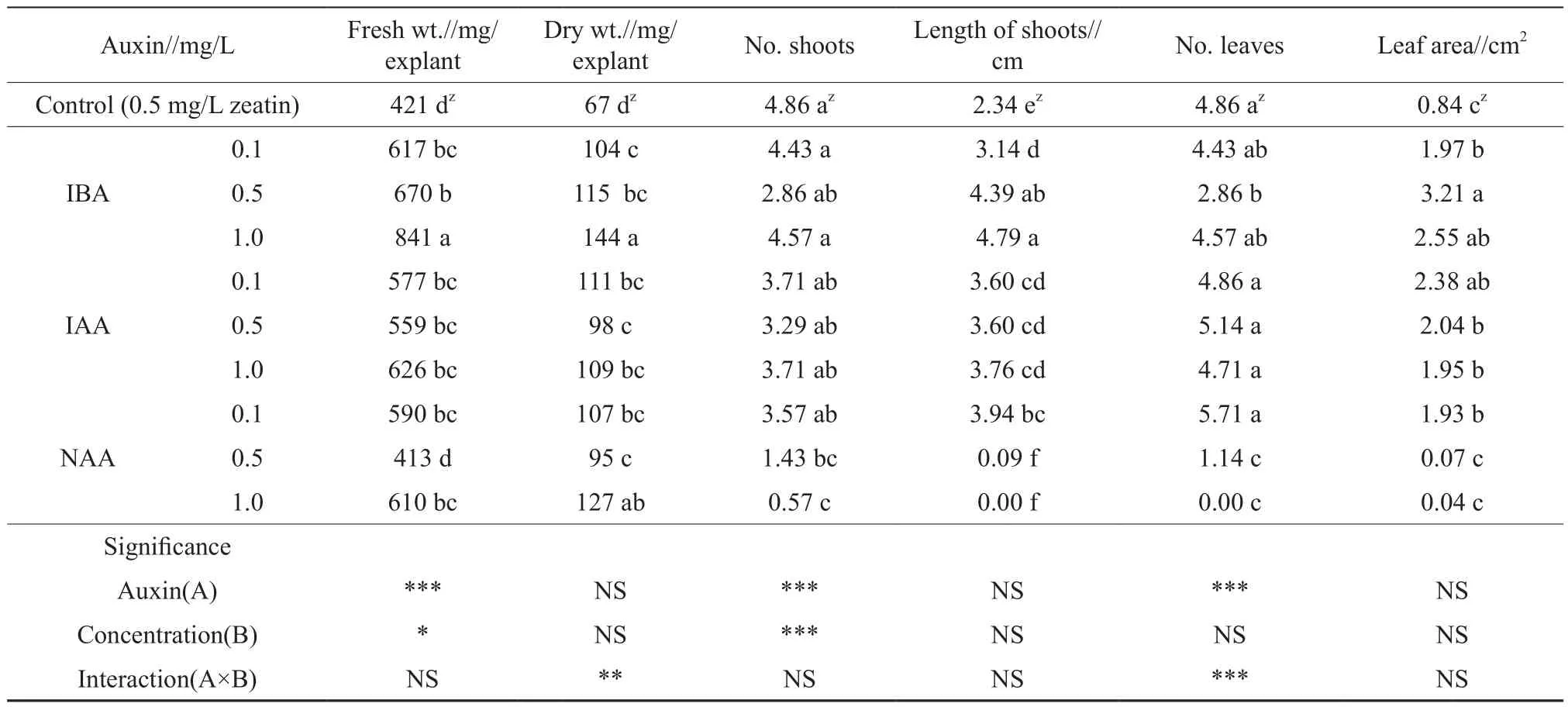
Table 3 Effect of different types and concentrations of auxins combined with 5 mg/L zeatin on shoot growth

Table 4 Effect of culture vessel type on multiple shoot proliferation of L. Pumila in liquid MS medium supplemented with TDZ 0.1 mg/L
4. Conclusions
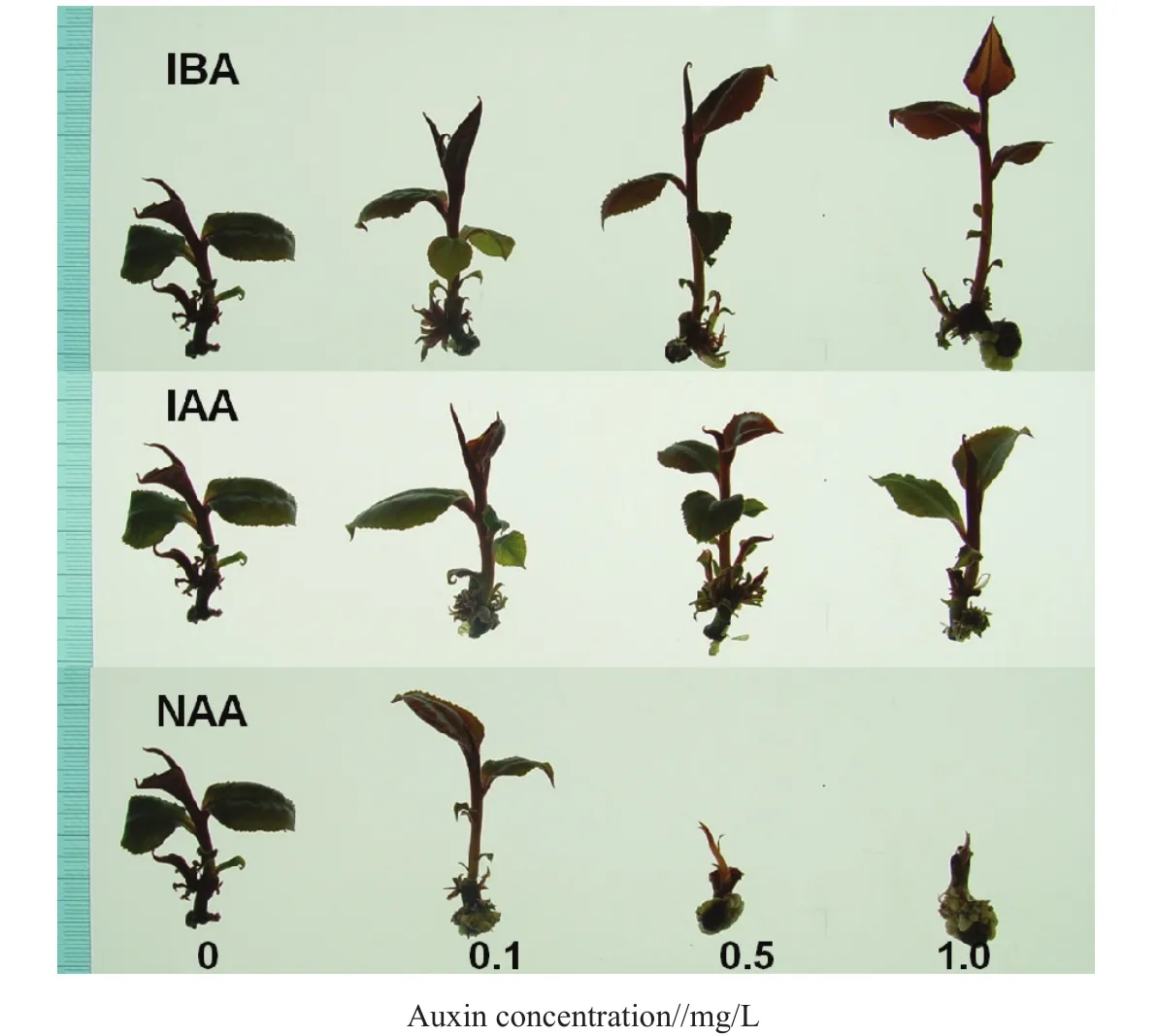
Fig. 4 Effect of different types and concentrations of auxins combined with 5 mg/L zeatin on L. pumila shoot growth after 12 weeks of culture.
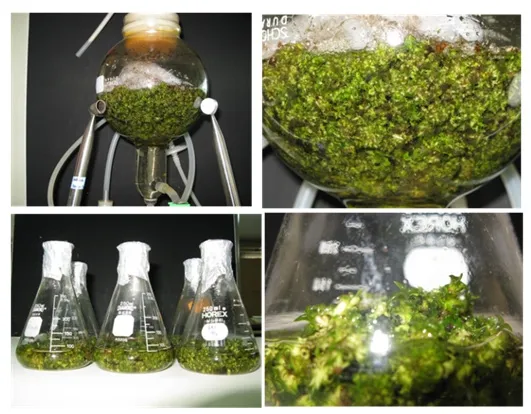
Fig. 5 Multiple shoots production in flasks and bioreactors: multiple shoots subcultured in liquid MS medium with 0.1 mg/L TDZ in 250-mL flasks and 3-L airlift bioreactors

Fig. 6 Plantlet growth in solid cultures (A, B) and acclimation (C)
The results suggested that the TDZ and zeatin were more effective forL.pumilashoot propagation.The TDZ treatment showed the highest cytokininlike activity and provided the maximum number of adventitious shoots. But the zeatin treatment had an influence on the shoot formation and elongation.The cytokinin-auxin combination resulted in the improvement of the health of shoots. In the bioreactor culture, large amounts of healthy and fresh shoots were obtained in the medium supplemented with the TDZ. After transplanting the multiple shoots from bioreactors to MS solid medium, the plantlets were regenerated and the regenerated plants were developed into morphologically normal and healthy plants in soil.This study demonstrated the feasibility of bioreactor technology forin vitromass propagation of multiple shoots ofL.pumilaby nodal segment culture.
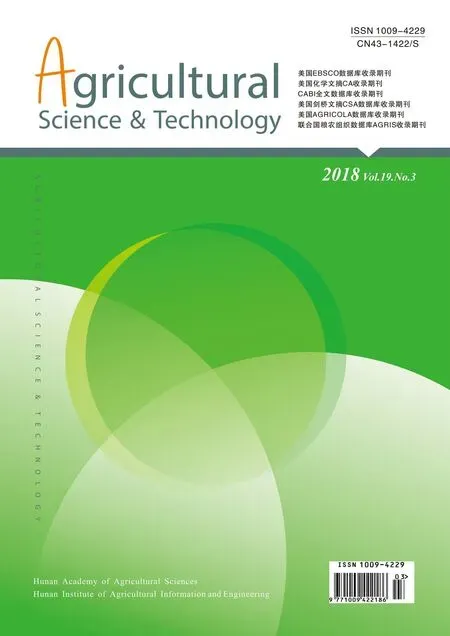 Agricultural Science & Technology2018年3期
Agricultural Science & Technology2018年3期
- Agricultural Science & Technology的其它文章
- Review of Factors Affecting the Yield and Quality of Corn Silage
- Effects of Biochar on Substrate Degradation and Ammonia Emission during Aerobic Composting of Chicken Manure
- Phthalate Esters Biodegradation by Fusarium Oxysporum in Vegetable Soil
- One-off Mechanized Fertilization for Maize in Semiarid Area of Jilin Province
- Tolerance to Iron-Deficiency Stress of Three Apple Rootstock Species in Hydroponic System
- Genetic Similarity Analysis of Hunan Rice Landraces with Same or Similar Name in Household and Genebank Conservations
